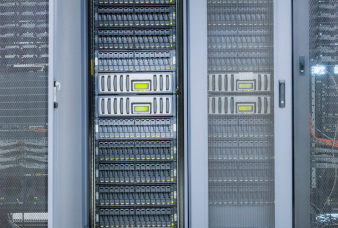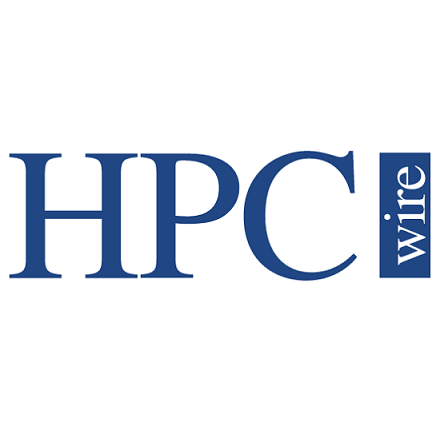
Moab Helps Canada Hospitals Build HPC4Health Cloud
October 13, 2015
In yet another example of HPC, cloud and big data convergence, Adaptive Computing announced today that its cluster and cloud management software Moab is part of Read more…

The Next Big Data Challenge: Data Paring
May 12, 2014
Guest Editorial I think a lot about big data and the challenges it proposes. I guess I started thinking about big data a long time before I ever heard the te Read more…

Cracking the Silos of Custom Workflows
February 27, 2014
In high performance computing, the time-honored concept of creating tailored workflows to address complex requirements is nothing new. However, with the advent Read more…

Middleware Is Cool
April 16, 2013
Despite the important advances that middleware enables in both the HPC and enterprise spheres, it generally fails to elicit the same excitement as, say, brand-new leadership class hardware. But middleware, such as Adaptive Computing's intelligent management engine, Moab, is cool and you don't have to take Adaptive's word for it. During the company's annual user event last week, Gartner gave Adaptive its "Cool Vendor" stamp of approval. Read more…

Adaptive Revs Moab, Debuts Remote Virtualization Edition
November 27, 2012
At SC12, Adaptive announced its Moab HPC Suite 7.2 release, which includes several productivity enhancements and introduces support for Intel Xeon Phi coprocessors. The workload management vendor also launched two new products as part of its Moab HPC Suite: Application Portal Edition and Remote Visualization Edition. Read more…

The Future of Workload Management
October 12, 2012
In this era of heterogeneous architectures and hybrid infrastructures, workload managers are necessarily becoming more and more sophisticated. Looking toward the future of workload management, there are three major trends: application insight, big data awareness, and HPC clouds. While inter-related, each has something important to contribute to the advancement of HPC. Read more…

Cloud Features Prominently at Moabcon 2012
April 23, 2012
During Moabcon, which took place earlier this month, Adaptive Computing highlighted its recent product refresh, laid out future plans and provided a forum for customer feedback. The well-attended event stirred lots of discussion around the relevancy of cloud computing to HPC, and contributor Steve Campbell was there to capture the proceedings. Read more…

Adaptive Computing Revs Up Moab
March 20, 2012
Adaptive Computing recently released a new version of Moab 7.0, both the HPC Suite (basic and enterprise editions) and also the Cloud Suite. While the workload management vendor has made important enhancements to its portfolio, what's even more interesting is how these offerings fit into an increasingly cloud-based IT environment. This in-depth interview with Adaptive Computing CEO Robert Clyde and Chad Harrington, Adaptive's vice president of marketing, shows how the company has leveraged its HPC roots to strengthen its cloud offerings. Read more…

- Click Here for More Headlines

Whitepaper
Transforming Industrial and Automotive Manufacturing
In this era, expansion in digital infrastructure capacity is inevitable. Parallel to this, climate change consciousness is also rising, making sustainability a mandatory part of the organization’s functioning. As computing workloads such as AI and HPC continue to surge, so does the energy consumption, posing environmental woes. IT departments within organizations have a crucial role in combating this challenge. They can significantly drive sustainable practices by influencing newer technologies and process adoption that aid in mitigating the effects of climate change.
While buying more sustainable IT solutions is an option, partnering with IT solutions providers, such and Lenovo and Intel, who are committed to sustainability and aiding customers in executing sustainability strategies is likely to be more impactful.
Learn how Lenovo and Intel, through their partnership, are strongly positioned to address this need with their innovations driving energy efficiency and environmental stewardship.
Download Now
Sponsored by Lenovo
Whitepaper
How Direct Liquid Cooling Improves Data Center Energy Efficiency
Data centers are experiencing increasing power consumption, space constraints and cooling demands due to the unprecedented computing power required by today’s chips and servers. HVAC cooling systems consume approximately 40% of a data center’s electricity. These systems traditionally use air conditioning, air handling and fans to cool the data center facility and IT equipment, ultimately resulting in high energy consumption and high carbon emissions. Data centers are moving to direct liquid cooled (DLC) systems to improve cooling efficiency thus lowering their PUE, operating expenses (OPEX) and carbon footprint.
This paper describes how CoolIT Systems (CoolIT) meets the need for improved energy efficiency in data centers and includes case studies that show how CoolIT’s DLC solutions improve energy efficiency, increase rack density, lower OPEX, and enable sustainability programs. CoolIT is the global market and innovation leader in scalable DLC solutions for the world’s most demanding computing environments. CoolIT’s end-to-end solutions meet the rising demand in cooling and the rising demand for energy efficiency.
Download Now
Sponsored by CoolIT
Advanced Scale Career Development & Workforce Enhancement Center
Featured Advanced Scale Jobs:
HPCwire Resource Library
HPCwire Product Showcase
© 2024 HPCwire. All Rights Reserved. A Tabor Communications Publication
HPCwire is a registered trademark of Tabor Communications, Inc. Use of this site is governed by our Terms of Use and Privacy Policy.
Reproduction in whole or in part in any form or medium without express written permission of Tabor Communications, Inc. is prohibited.
























